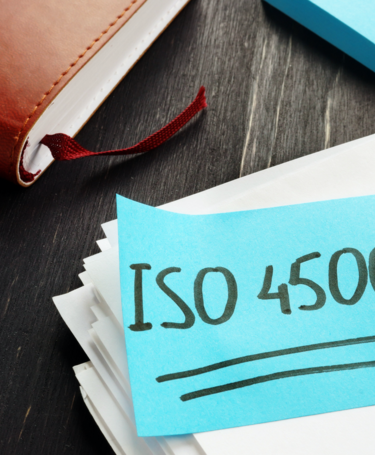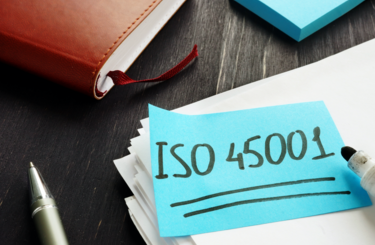
The demise of the management representative

Dr Christel Fouche, Health and Safety Specialist and Lead Auditor, shares her experience for performing successful audits under the ISO 45001 standard, and explains how to adapt to changes following the migration from OHSAS 18001.
Auditing was much easier when a management representative was a requirement in OHSAS 18001, but this is no longer compulsory in ISO 45001. Over the years, I have conducted my fair share of audits and worked with many management representatives. I understood their role in the auditing process, had a list of questions prepared and knew which documents to ask for. Together, management representatives and I have sat through many uncomfortable silences and listened to explanations about situations that would often constitute grounds to abandon audits.
Somehow, I made it through all those audits until one day, the management representative was no longer a requirement due to the change from BS OHSAS 18001 to ISO 45001:2018.
This change created a few challenges. Usually, top management would delegate responsibility for the health and safety management system to one person and adopt a hands-off approach. With ISO 45001, this changed to how it should have been from the start as discussed below:
It soon became apparent why management representatives were removed in the new standard. In ISO 45001:2018 there is a high-level clause, namely Clause 5 ‘Leadership and Worker Participation’.
Under Clause 5.1 (Leadership and commitment) of ISO 45001, top management must demonstrate leadership and commitment with respect to the occupational health and safety (OHS) management system. Some of the requirements they must carry out to do this include:
- Taking overall responsibility and accountability for the prevention of work-related injury and ill health, as well as the provision of safe and healthy workplaces and activities;
- Ensuring that the OHS policy and related OHS objectives are established and are compatible with the strategic direction of the organisation;
- Ensuring the integration of the OHS management system requirements into the organisation’s business processes;
- Ensuring that the resources needed to establish, implement, maintain and improve the OHS management system are available;
- Communicating the importance of effective OHS management and of conforming to the OHS management system requirements;
- Ensuring that the OHS management system achieves its intended outcome(s);
- Directing and supporting persons to contribute to the effectiveness of the OHS management system.
With this change, I questioned:
- How would I personally handle this change?
- Will my tried and tested audit approach still work?
- Will I have to change my fool-proof set of verification questions?
- How will top management deal with my probing search for evidence?
The previous interview of the management representative has now been replaced with an interview with top management. Normally, I would interview a Board member and the CEO, but it depends on what constitutes “top management” within the scope of the audit.
At first, this was a bit of a struggle because I had to let go of my old ways and devise new strategies to gather the evidence that I needed to verify conformity. I have also found big differences between the way I have interviewed the management representative and how an interview with the CEO plays out. For me, one of the key differences must be that I perceived most management representative interviews to contain a variety of creative explanations, while the CEO’s responses would be more robust and to the point.
Question time
Below are some of the questions I now ask the CEO and his/her Executive Team on a regular basis. The list is still a work in progress, but it is designed and constantly refined to encourage the CEO to sit up and be present.
- What is your three-year strategic plan in terms of implementing and maintaining your OHS management system?
- What objectives did you put in place to achieve these? Were you involved in drawing up these objectives?
- Can you list the top two safety and health risks within your operations? How could these critical risks influence your strategic success plan?
- The standard requires that the process-approach towards implementing and maintaining an OHS management system must be applied. What is your understanding of this concept and how is it applied?
- How do you promote OHS and your plans to others within and beyond your organisation?
- How do you ensure that enough resources are available for the successful implementation of this plan?
I have reviewed a couple of certification body question lists and others found online. In most cases, it is just the clause content changed into a question with a yes or no answer. This is not good enough in my opinion. A good auditor can do so much more with this opportunity to interview the CEO and top management.
Interviewing tips
It is important to remember that the CEO is the leader of the organisation. His or her time is limited and valuable. They are also humans just like the rest of us so you must make sure you approach them like you would do anybody else.
Their core function and skills are not in OHS so ensure your questions are clear and succinct. During the interview, help them clarify a possible answer if you feel that they are unable to formulate an appropriate response.
The interview is a valuable opportunity to coach and share knowledge. Always ask open-ended questions to start with and follow-up with further questions based on the reply you receive. The result you are seeking should be for the CEO to have a clear understanding of his/her roles and function in the context of conforming to the health and safety management system standard requirements in ISO 45001:2018. It should always end on a positive note.
We might have witnessed the departure of the management representative, but what auditors received in return is an opportunity we should not convert into a mere checklist.
Good impression
An interview with top management, including the CEO and a board member, will provide significant information in terms of the health and safety insights and knowledge of top management, as well as their commitment towards the OHS management system.
I can still remember my first Clause 5.1 CEO interview. I was a bit stressed at first, but it turned out well in the end. The conclusion I came to after a self-assessment was that it is important to make a great start to the interview.
How do you know you started well? In my mind, it is when you start with an interview, but it ends as a conversation. A conversation that is an exchange of ideas that will benefit the CEO and improve the prospects of the OHS management system long after you have gone.